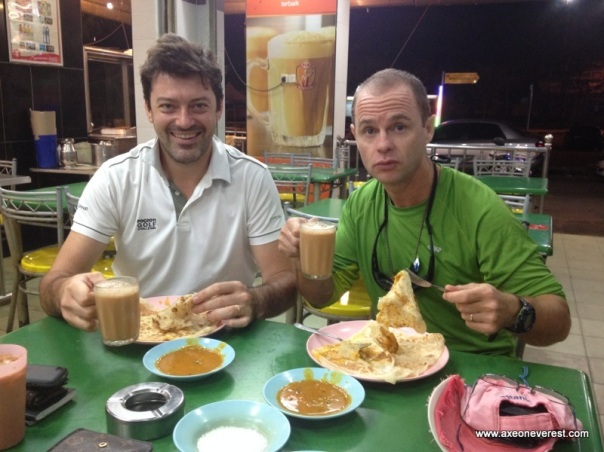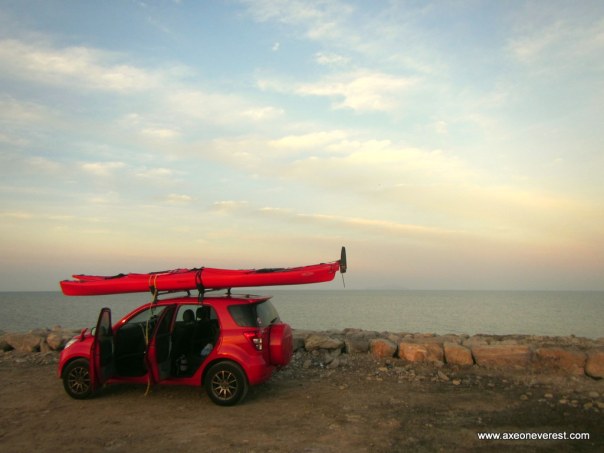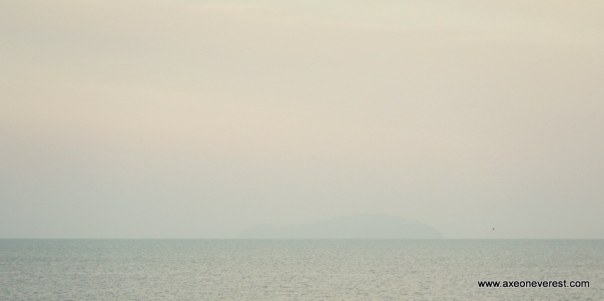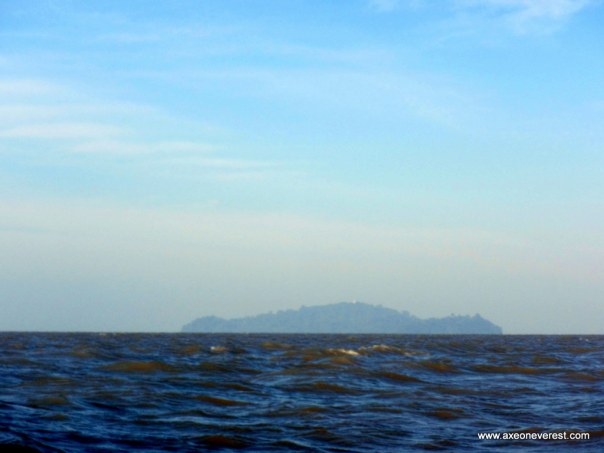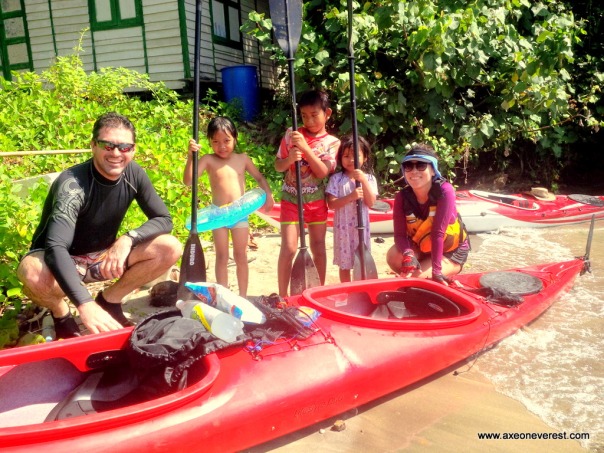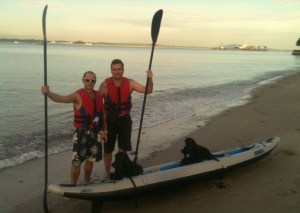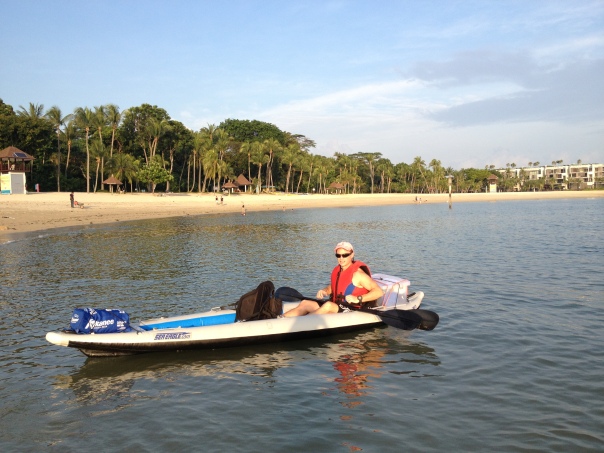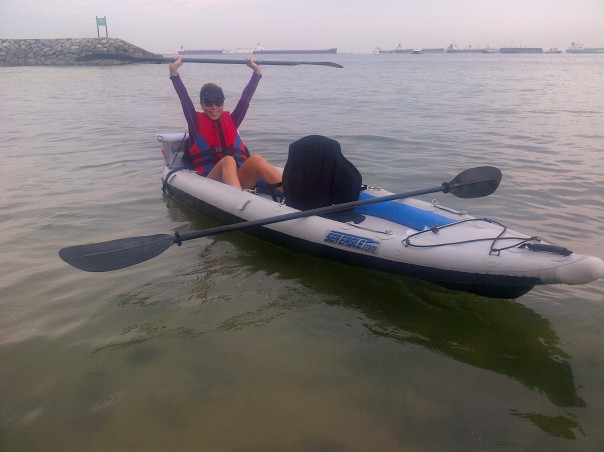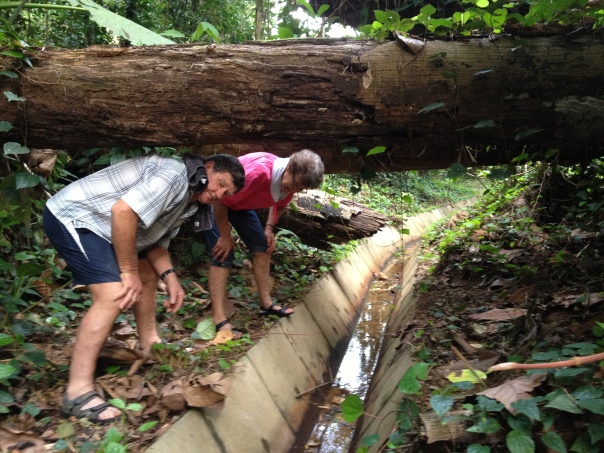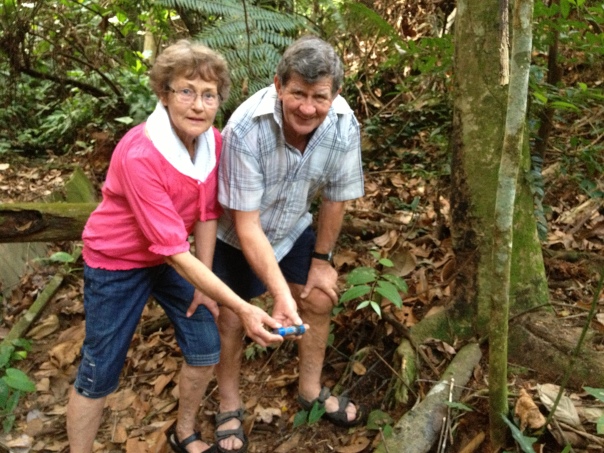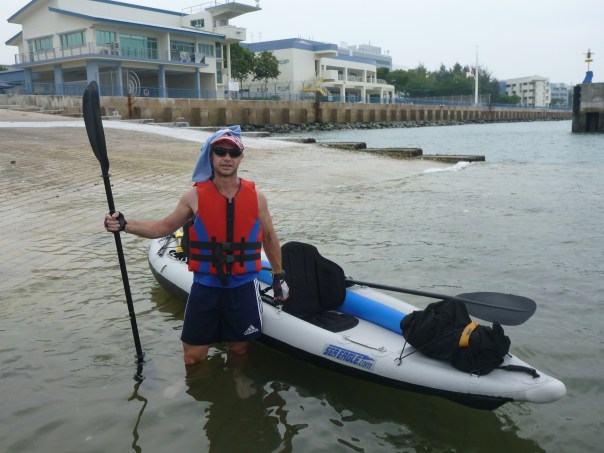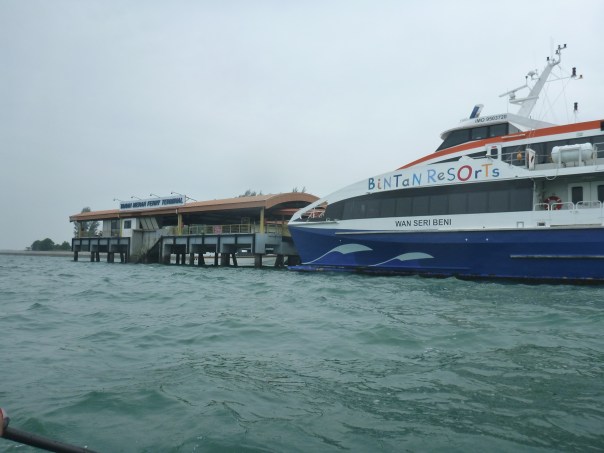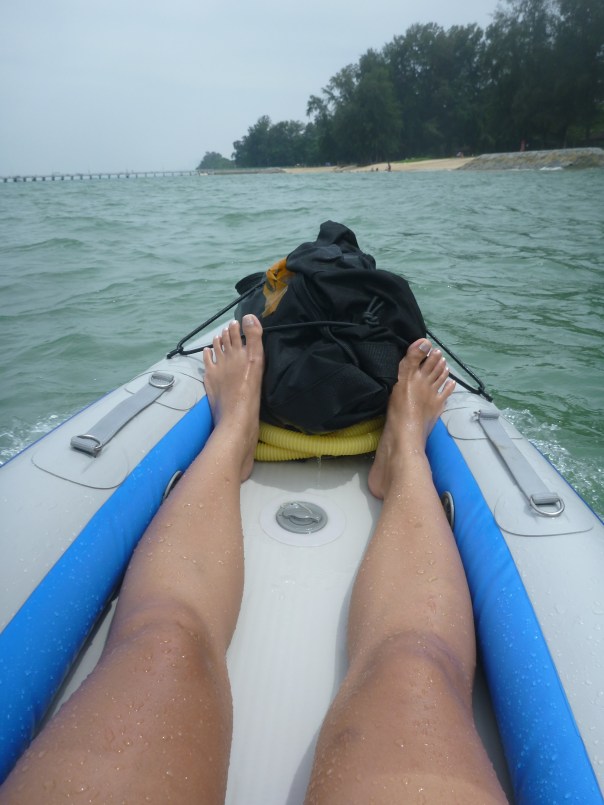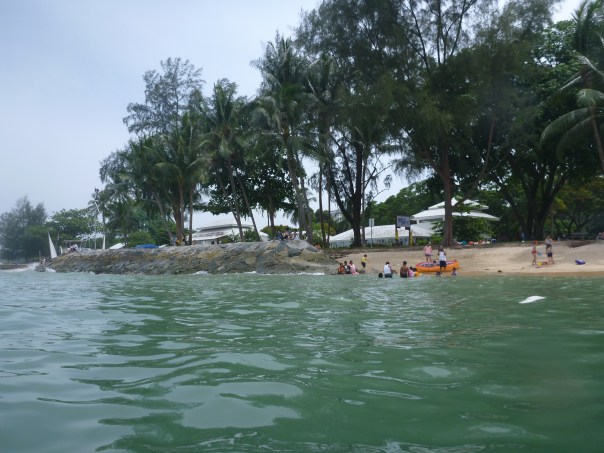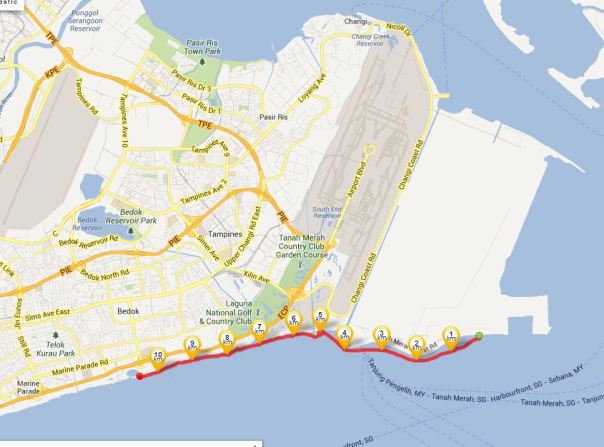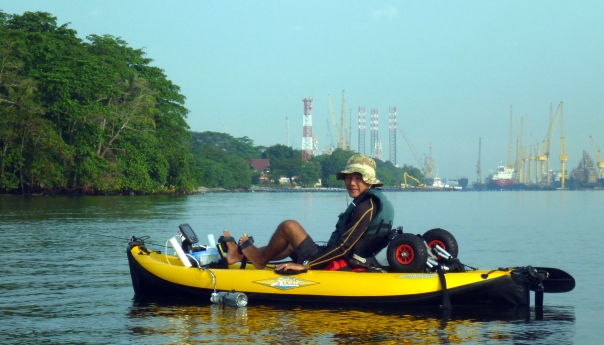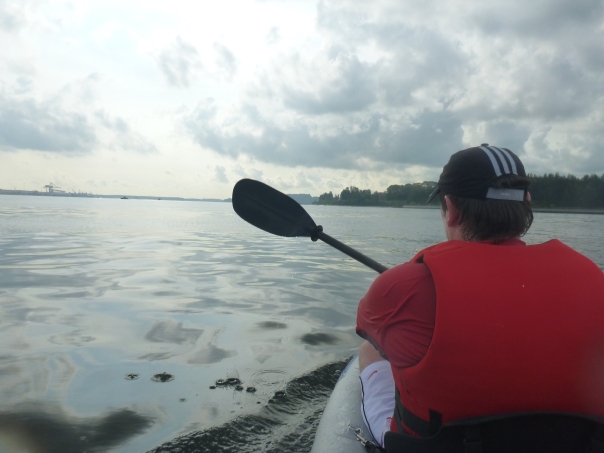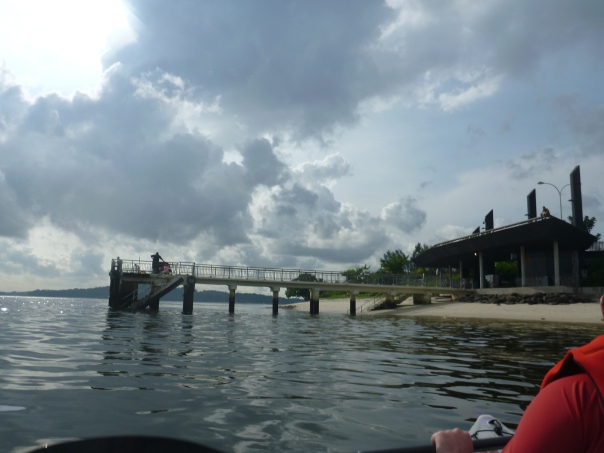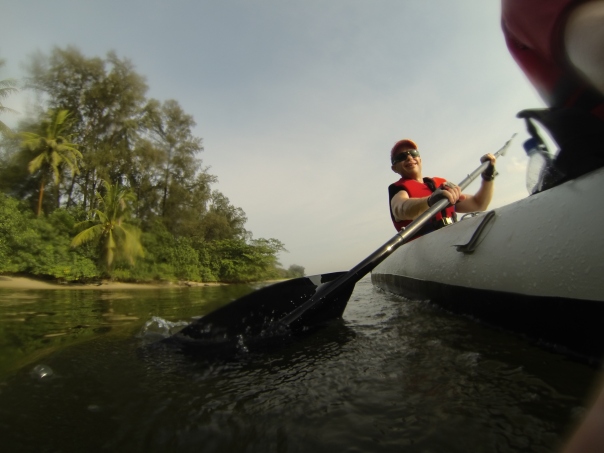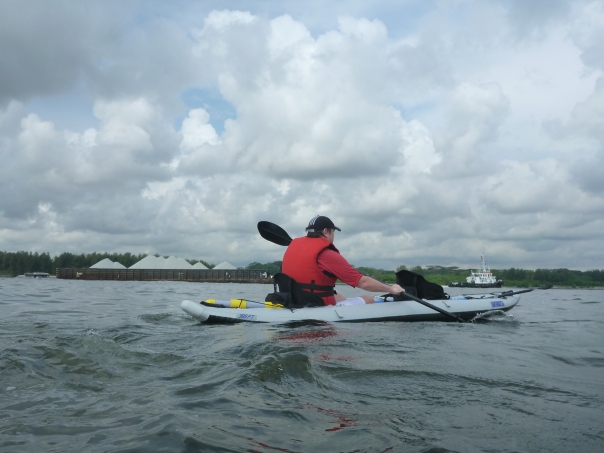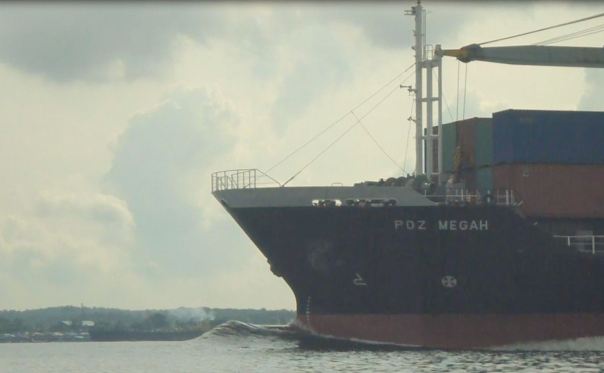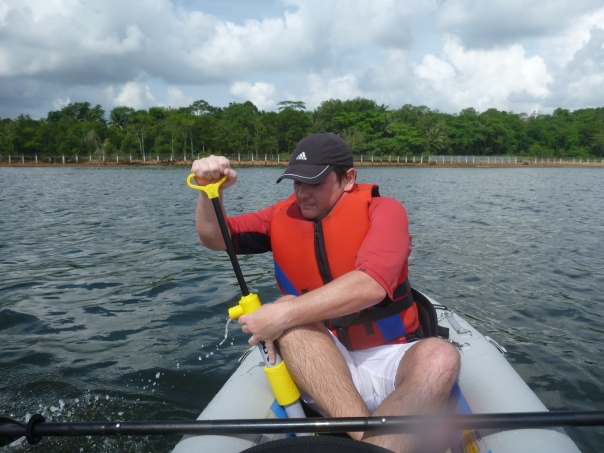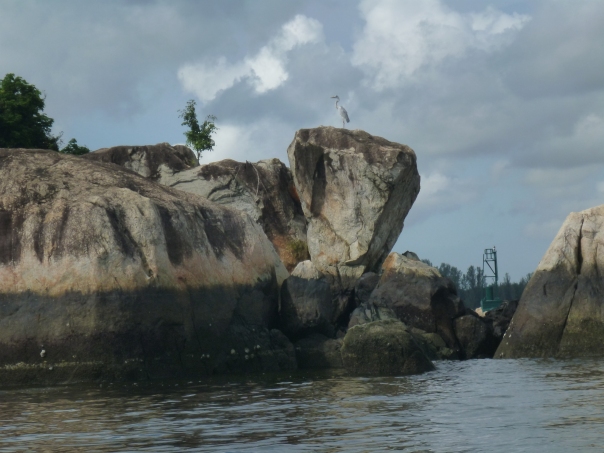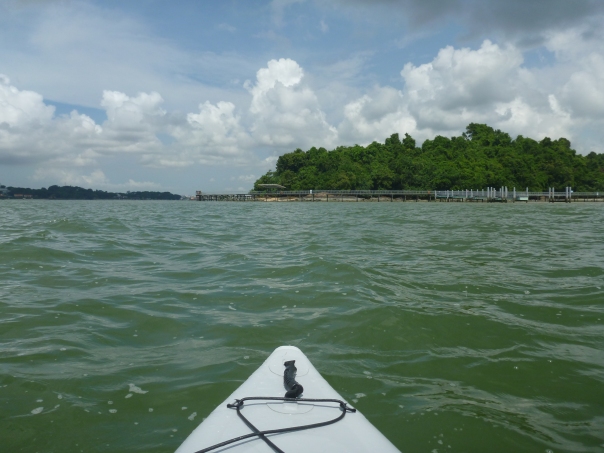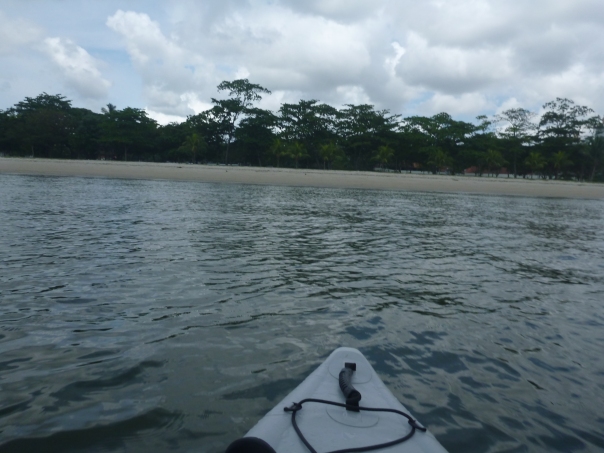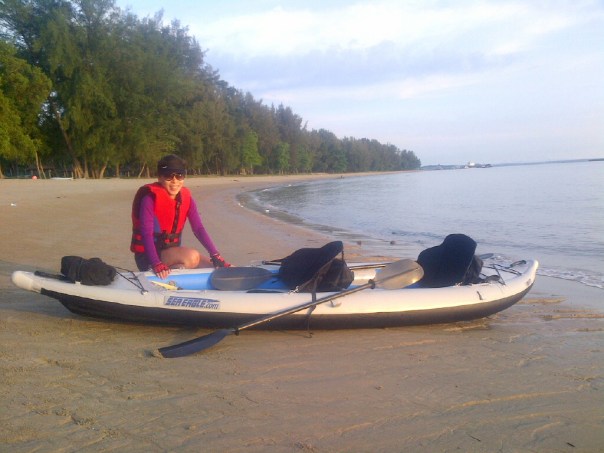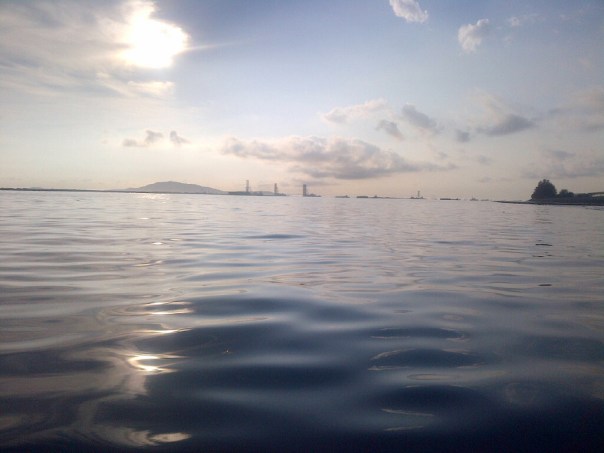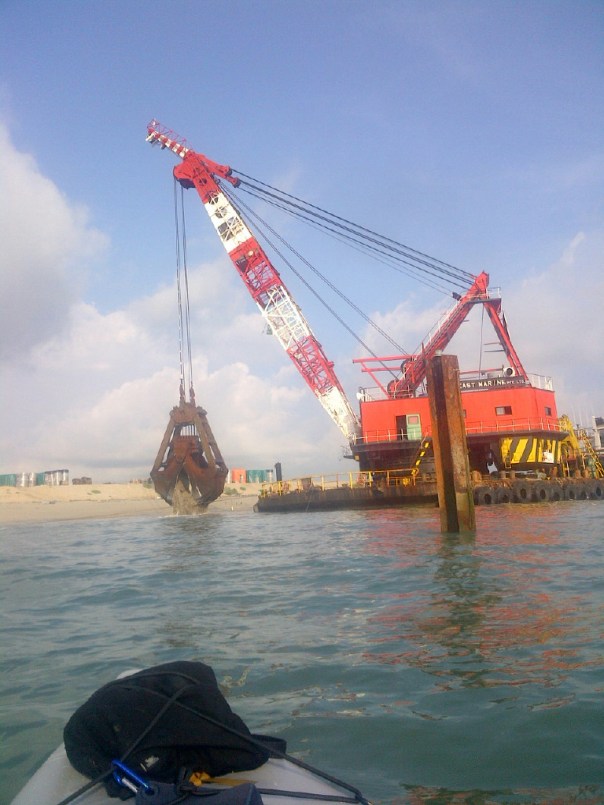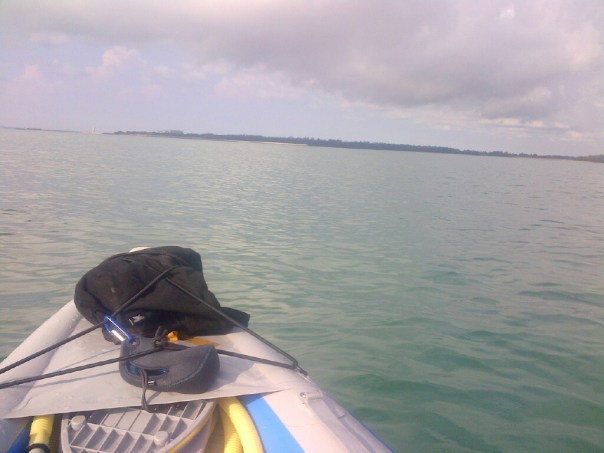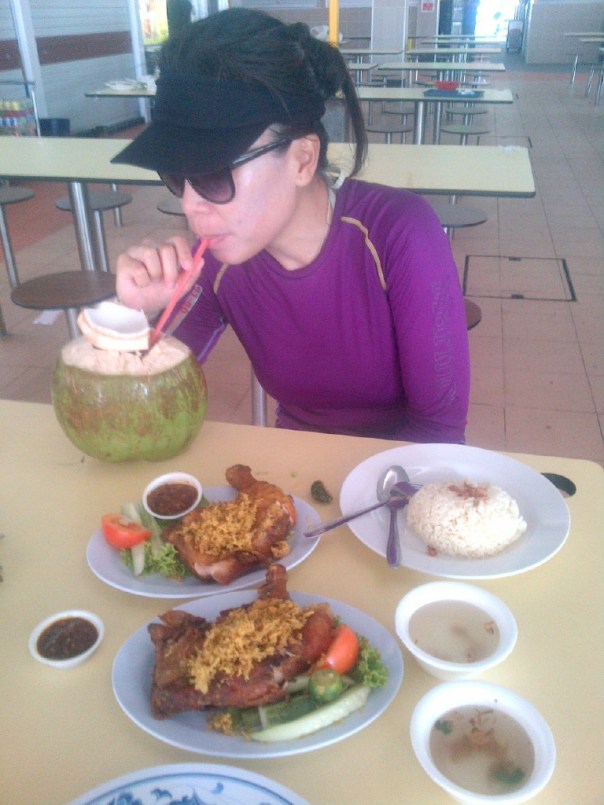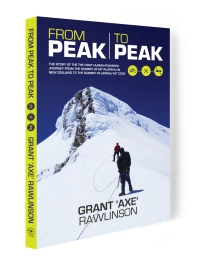After living for almost 15 years on this beautiful tiny little Island, Singapore yet again surprised and delighted me this morning.
The story actually starts some weeks back.
A wise man once said “Every man wants three things in life, beautiful woman, the company of good friends, and an inflatable kayak”. (I just made that up but I am sure wise men would say stuff like that).
So it was with much anticipation and excitement three weeks ago that I took delivery of my brand new Sea Eagle Fast Track Inflatable Sea Kayak, mail ordered from the USA and delivered to my office as it was too large to fit in my home post box.
I lumped the 3 large boxes into my car and ferried them home and set about setting up the paddles and inflating the kayak in the small lounge of our 1000 sq foot apartment. I had deliberately kept the purchase of this little pleasure vessel a secret from my wife Stephanie as I wanted to surprise her. (A secondary reason was that I knew she may stop me doing it).

Surprise!!!
It definitely did turn out to be a surprise for her when she came home and found me sitting in the inflated kayak in the lounge watching television. In fact she was so surprised she made me pack it up immediately and get it out of the lounge before I smashed the glass ranch slider with my paddle. After my few pre-prepared lines such as “Its got two seats, one for you and one for me” and “god you look beautiful when you are angry” did not seem to enable her enthusiasm for the purchase, I resigned myself to the fact that I would have to get her out on an adventure to prove just how much of a good idea this whole thing actually was. All Stephanie seemed concerned about was tiny little details such as ‘where are we going to store it?’ and ‘how are you going to clean it?’ and ‘what will you do it when it gets a hole in it when you are in the ocean?’. All things I had never actually thought about to be honest.
After completing our ‘1 star kayaking course’ two weeks previously with the lovely people from Xtreme kayaking (I strongly recommend them if you want to learn how to kayak as they are very patient and run professional, well taught courses at Manamana on East coast parkway), we ventured to Changi Village on Easter Friday morning and set out on the maiden voyage. During the 1 star kayaking course, our inflatable kayak has been fondly christened ‘The Divorce Machine’ by good friend Mr Blair Spendelow. Stephanie seemed to think the name was quite appropriate. So I decided to stick with it.

Pumping up ‘The Divorce Machine’ at Changi beach car park.
The plan was to start at Changi beach, and paddle ‘The Divorce Machine’ across the Singapore straits, and around the eastern half of Pulau Ubin (an island located just off the North East coast of Singapore). Pulau Ubin means ‘Tile Island’ in Malay. This is because of the granite that was quarried from the island and used for building purposes on the Singapore mainland. The granite quarries closed in the 1960’s and the island has since become one of the few placed in Singapore where you can experience a relaxed kampong (village) atmosphere in some beautiful natural surroundings.
After some extensive research and pre-planning (2 minutes on the computer checking the tide tables and a quick sketch on a piece of paper to work out the currents the day before), my calculations showed that high tide would be around 12:26PM, and we could therefore do a counter clockwise loop around Pulau Ubin, paddling with the current as we headed west, then cut straight down through the island through the river mangroves as we reached high tide then could paddle back across the strait to Changi Beach in a south easterly direction with the current as the tide started to go out. (The current direction in Singapore is directly related to the tide, when the tide comes in, the current flows to the west and vice verca).
The Singapore strait happens to be a very busy shipping channel, with some very large boats and very many ferries travelling very fast which all made me very nervous paddling very slowly in a very small rubber kayak filled with a very small amount of air laden with a very precious cargo (i.e. my wife). However the water surface was calm and with no wind it was ideal conditions for paddling. We set off at 10AM and crossed the channel in between tug boats pulling huge barges full of sand, large merchant vessels and many smaller ferries. Stephanie even seemed to enjoy the excitement of dodging these huge vessels.

Some of the things we decided to give way to in the Singapore Straits
Here we paddled around the perimeter of an area known as Chek Jawa. Chek Jawa is a marine reserve and full of rich bio diversity. I had read the day before that it is possible to see dolphins in Chek Jawa. We were having a small rest from paddling and enjoying sitting in the boat when suddenly only 10 feet from the boat something surfaced and let out a whoosh of air. It scared the crap out of both of us, “what was that?!” Stephanie squeaked in alarm. “It must have been a dolphin” I excitedly shot back. I couldn’t believe our luck! We eagerly scanned the water surface for the next few minutes to see if we could spot the creature again but alas it was not to be. Since coming home I have done some research online. It may have been a dolphin or a dugong, it is hard to say as we did not get a good look at it. I would love to hear from anyone else who reads this, if they have had other similar experiences.
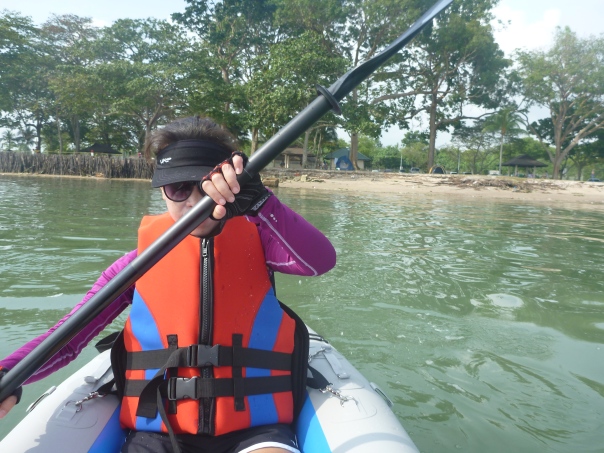
We set off leaving Changi beach behind.

The board walks along Chek Jawa’s rocky foreshore. These help protect the rich ecosystem and one of the last natural rocky shorelines in Singapore
We continued our way around the island. It was a beautiful morning for kayaking, slightly overcast which meant it was not to hot and glary. I marvelled at the beauty of the rocky shoreline of Chek Jawa. I could not help but wonder why I had never visited this area in 15 years of living in Singapore. As it turned out the day just kept on getting better and better. My current and tidal predictions turned out to work out about as perfectly as I could have hoped for. We moved easily with the current around the northern end of the island. Here there is a fence along the rocky shoreline – I presume to stop people swimming in from Malaysia? There is also quite a lot of garbage floating in the sea. My view on this is that instead of moaning about it, if everyone picked a bit up then the situation would naturally improve. We ended up picking up a large bag full of plastic bottles, wrappers and all sorts of bits and pieces which we took back to a rubbish bin on Pulau Ubin.
We paddled on past some floating fish farms or ‘kelong’ in Malay (not sure if I spelt that correctly so please do comment if I am wrong).

A ‘Kelong’ or floating fish farm.
Finding the mouth of the river was interesting as from a distance the entire shoreline looks fenced. It is not until you get closer up that the entrance to the river is apparent where there is a gap in the fence. Once in the mangrove system, the scenery changed completely. The tide was pushing hard up the river so we floated along with a few easy strokes every now again to keep direction. Stephanie at this point became a little concerned about the presence of crocodiles. Every log and stick floating along in the murky water soon took on the resemblance of a crocodiles head and our minds raced with wild thoughts. I tried to sound confidently reassuring to Stephanie by informing her the only wild crocodiles in Singapore were a few km further west in the Sungei Buloh nature reserve. But I do admit wondering to myself – if they are up there, then why are they not down here?!

Finding the hole in the fence to access the mangroves and the river mouth entrance

Paddling through the mangroves – I imagined we could have been in the Amazon!
The scenery was beautiful though and was we followed the many twists and turns of the river, not a sight or sound of another soul, just us, the river and the mangroves lining the banks. I imagined we could have been anywhere in the world. Floating down the mighty Amazon in South America even. From the small map I had printed the night before, I knew we had a short portage (portage means carry the kayak) of a few hundred metres to access the river system draining south through the island. I popped the divorce machine on my head and headed off while Stephanie carried the paddles and other bits and pieces. Soon we were in the second section of river and were paddling out into the Singapore Strait on the south side of Pulau Ubin, heading back for Changi beach.
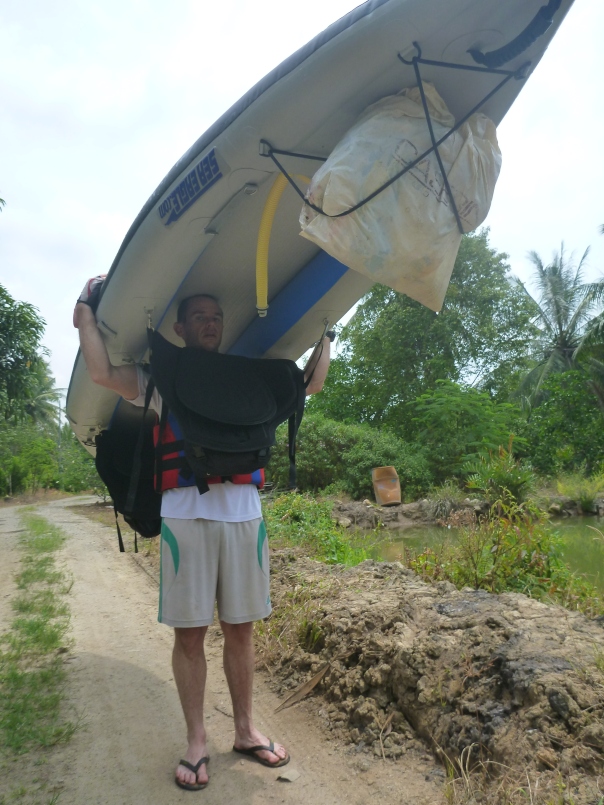
Carrying the divorce machine on my head for a short distance across the interior of Pulau Ubin.
By now the wind had picked up, the tide was going out, and the current had reversed direction. The shipping channel was busier and the wind and the ship wakes caused the swell to pick up. It was great fun and even felt a little exhilarating as we paddled hard in between breaks in the vessel traffic to get across to the mainland side. Here we had a relaxed paddle following the coast back down to Changi beach where we had a well deserved swim. I mapped our route using GPS and the RUNTASTIC application on my blackberry phone. We paddled just over 17km and it took a total of exactly 4 hours.
The great thing about an inflatable kayak is they are so portable. Back at the car park, I simply deflated the boat and rolled it up and stuck it in the boot. This took no longer than 15 minutes. My first impressions of ‘The Divorce Machine’ after her maiden voyage are really very positive. She tracks in a straight line very well. She is very stable even in boat wakes and larger swells. She is made of tough material that seems very hard to puncture, and is fast to set up and pack up. The biggest bonus of all – Stephanie loved the trip!
We are really looking forward to more kayaking exploration and adventures over the next few months. Happy Easter and may you also have some exciting adventure to put some sunburn on your body, a smile on your face and some happy memories in your heart before you go back to work on Monday!

Stephanie arrives back at Changi beach after completing the maiden voyage of ‘The Divorce Machine’
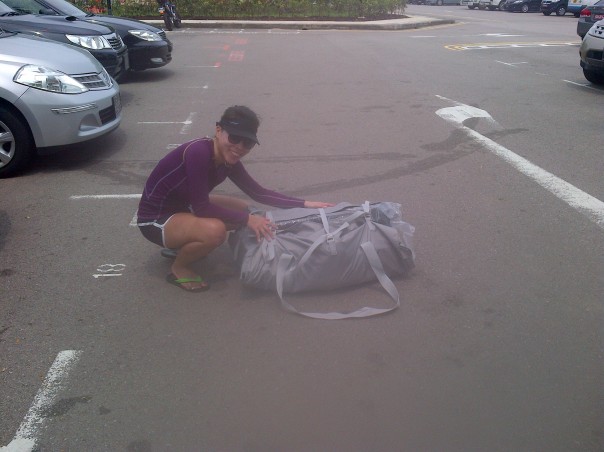
‘The Divorce Machine’ all packed up in 15 minutes flat, fits into this small bundle.

Our approximate route around Pulau Ubin, 17km and 4 hours paddling time in total.
This blog is listed under a section on my website called ‘Singapore Micro Adventure’. Micro adventures are cheap simple adventures close to home. A chap named Alistair Humphreys coined the phrase ‘micro adventure’, you can read about him here. I will continue to add more micro adventures to my website to give people idea’s and inspiration to go on your own adventures. If you do go on your own, I would love to hear about them and do drop me a line!

































